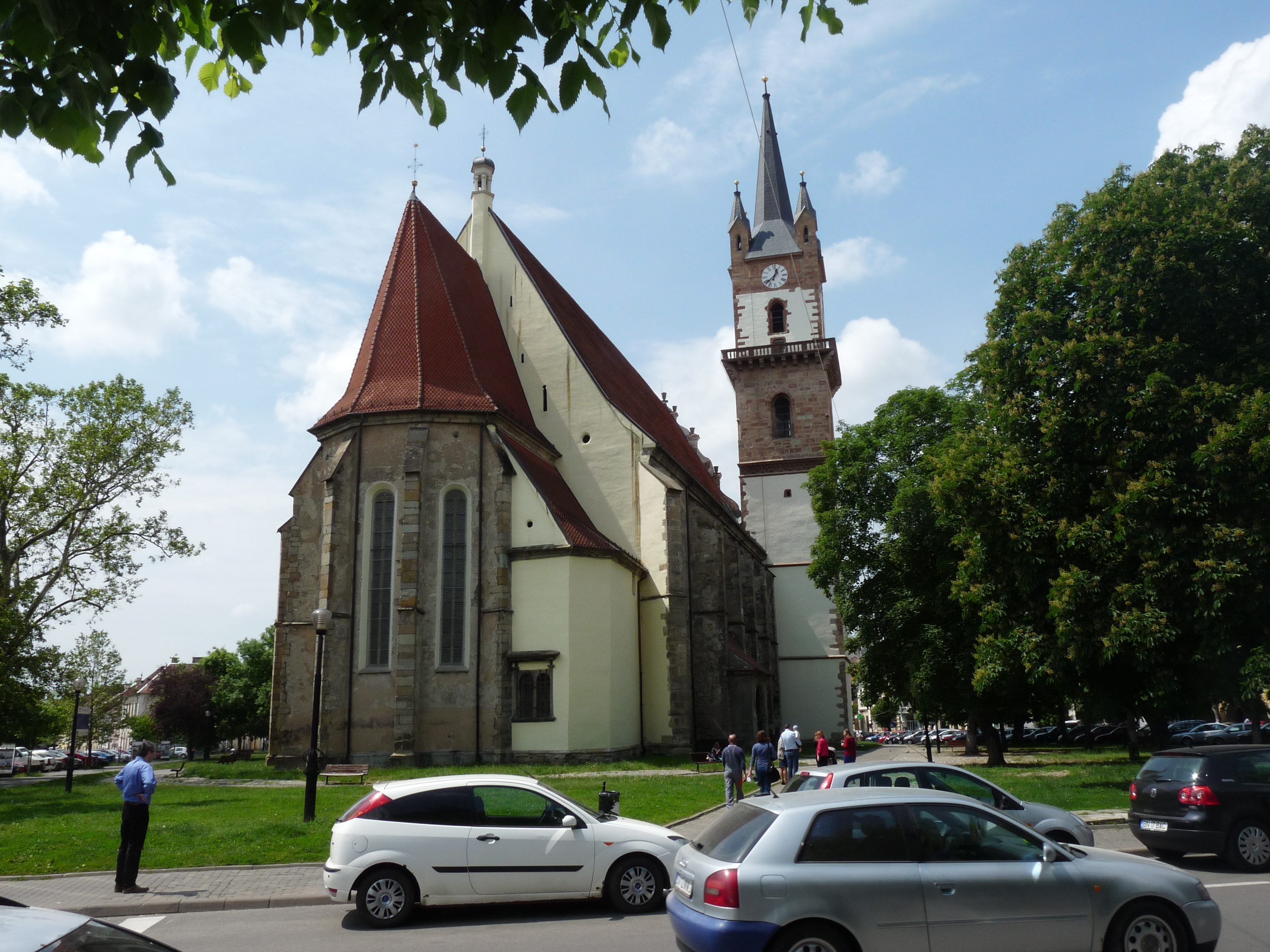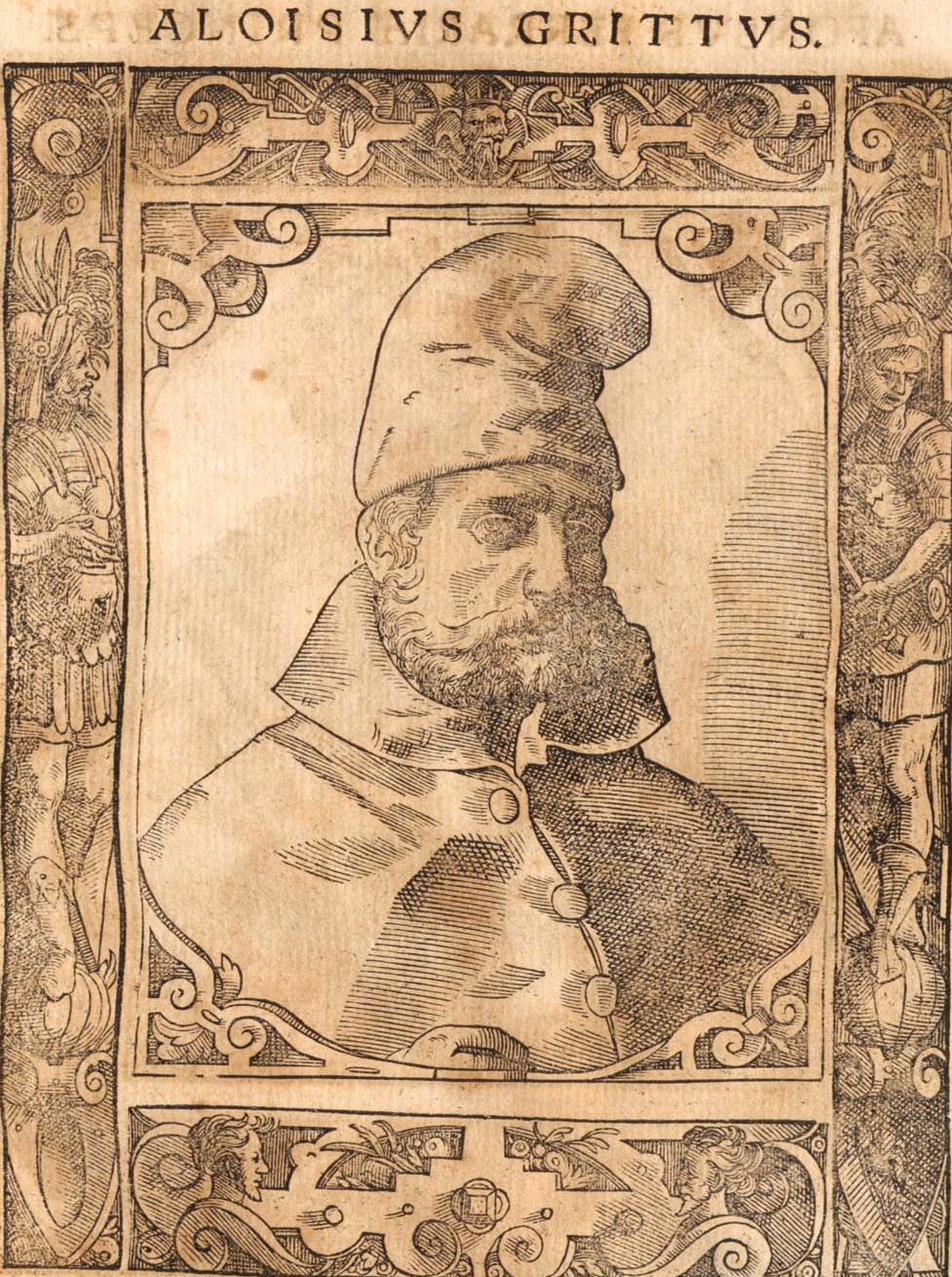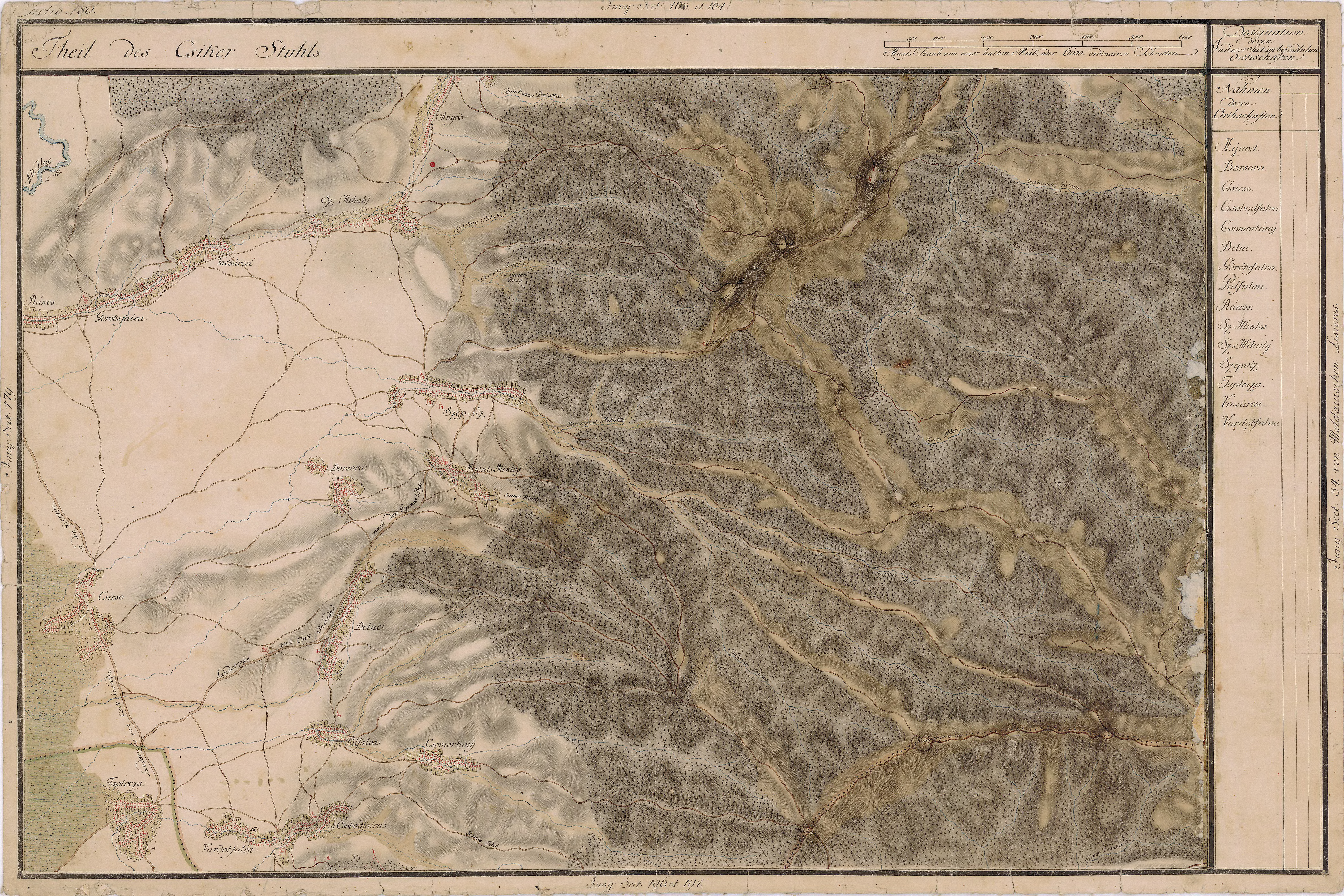|
Petru Rareș
Petru Rareș (), sometimes known as Petryła or Peter IV (Petru IV; c. 1483 – 3 September 1546), was twice voivode of Moldavia: 20 January 1527 to 18 September 1538 and 19 February 1541 to 3 September 1546. He was an illegitimate child born (probably at Hârlău) to Stephen the Great. His mother was Maria Răreșoaia of Hârlău, whose existence is not historically documented but who is said to have been the wife of a wealthy boyar fish-merchant nicknamed ''Rareș'' "rare-haired" (i.e., bald). ''Rareș'' thus was not Petru's actual name but a nickname of his mother's husband. In his youth he was a fish merchant, but Prince Ștefăniță, grandson of Ștefan cel Mare, on his deathbed, recommended Petru as a suitable contender to the throne, thus acknowledging Petru's blood lineage from Ștefan cel Mare. Petru exhibited many of his father's qualities: ambition, daring, bravery, piety, artistic taste. However, he was marked by inconstancy and a lack of political instincts. Fi ... [...More Info...] [...Related Items...] OR: [Wikipedia] [Google] [Baidu] |
List Of Rulers Of Moldavia
This is a list of rulers of Moldavia, from the first mention of the medieval polity east of the Carpathians and until its disestablishment in 1862, when it united with Wallachia, the other Danubian Principality, to form the modern-day state of Romania. Notes Dynastic rule is hard to ascribe, given the loose traditional definition of the ruling family (on principle, princes were chosen from any branch, including a previous ruler's bastard sons – being defined as ''os de domn'' – "of domn marrow", or as having ''hereghie'' – "heredity" (from the Latin ''hereditas''); the institutions charged with the election, dominated by the boyars, had fluctuating degrees of influence). The system itself was challenged by usurpers, and became obsolete with the Phanariote epoch, when rulers were appointed by the Ottoman Sultans. Between 1821 and 1862, various systems combining election and appointment were put in practice. Moldavian rulers, like Wallachian and other Eastern European rul ... [...More Info...] [...Related Items...] OR: [Wikipedia] [Google] [Baidu] |
Bistrița
(; german: link=no, Bistritz, archaic , Transylvanian Saxon: , hu, Beszterce) is the capital city of Bistrița-Năsăud County, in northern Transylvania, Romania. It is situated on the Bistrița River. The city has a population of approximately 70,000 inhabitants and administers six villages: (; ), (; ), (; ), (; ), (until 1950 ; ; ) and (; ). Etymology The town was named after the River, whose name comes from the Slavic word meaning 'fast-moving water'. History The earliest sign of settlement in the area of is in Neolithic remains. The Turkic Pechenegs settled the area in 12th century following attacks of the Cumans. Transylvanian Saxons settled the area in 1206 and called the region . A large part of settlers were fugitives, convicts, and poor people looking for lands and opportunities. The destruction of ("Market Nösen") under the Mongols of central Europe is described in a document from 1241. The city was then called . Situated on several trade routes, beca ... [...More Info...] [...Related Items...] OR: [Wikipedia] [Google] [Baidu] |
Iași
Iași ( , , ; also known by other #Etymology and names, alternative names), also referred to mostly historically as Jassy ( , ), is the second largest city in Romania and the seat of Iași County. Located in the historical region of Western Moldavia, Moldavia, it has traditionally been one of the leading centres of Romanian social, cultural, academic and artistic life. The city was the capital of the Principality of Moldavia from 1564 to 1859, then of the United Principalities from 1859 to 1862, and the capital of Kingdom of Romania, Romania from 1916 to 1918. Known as the Cultural Capital of Romania, Iași is a symbol of Romanian history. Historian Nicolae Iorga stated that "there should be no Romanian who does not know of it". Still referred to as "The Moldavian Capital", Iași is the main economic and business centre of Romania's Moldavian region. In December 2018, Iași was officially declared the Historical Capital of Romania. At the 2011 Romanian census, 2011 census, th ... [...More Info...] [...Related Items...] OR: [Wikipedia] [Google] [Baidu] |
Mediaș
Mediaș (; german: Mediasch, Transylvanian Saxon: ''Medwesch''/''Medveš'', hu, Medgyes) is the second largest town in Sibiu County, Transylvania, Romania. Geographic location Mediaș is located in the middle basin of Târnava Mare River, at from Sighișoara and from Blaj. The health resort Bazna, officially recognized for the first time in 1302, is from Mediaș. The health resort offers mineral water springs, rich in salts, mineral mud and a special type of salt, called "Bazna salt". The distance between Mediaș and the county's residence Sibiu is . The city administers one village, Ighișu Nou (''Eibesdorf''; ''Szászivánfalva''). History The first signs of human communities in the area are thought to be from the middle Neolithic period. The name of the city comes from the Hungarian word meggy (sour cherry). The Romanian name originates in the German version, which comes from the Hungarian name (Medgyes). In the 13th century, the kings of Hungary invited Germa ... [...More Info...] [...Related Items...] OR: [Wikipedia] [Google] [Baidu] |
István Majláth
István () is a Hungarian language equivalent of the name Stephen or Stefan. It may refer to: People with the given name Nobles, palatines and judges royal * Stephen I of Hungary (c. 975–1038), last grand prince of the Hungarians and first king of Hungary * Stephen Rozgonyi (died after 1440), ''ispán'' (Count) of Temes County * Stephen III Báthory (died 1444), Palatine of Hungary * Stephen V Báthory (1430–1493), Hungarian commander, judge royal and Voivode of Transylvania * Stephen VIII Báthory (1477–1534), Voivode of Transylvania * Stephen VII Báthory (1480–1530), Count of Temesvár and Palatine of Hungary * Stephen Báthory (1533–1586), Voivode of Transylvania, Prince of Transylvania, King of Poland and Grand Duke of Lithuania * Stephen Báthory (1555–1605), judge royal of the Kingdom of Hungary * Stephen Bocskai (1557–1606), Prince of Transylvania and Hungary * Stephen Bethlen (1582–1648), Prince of Transylvania Politicians * István Balogh (polit ... [...More Info...] [...Related Items...] OR: [Wikipedia] [Google] [Baidu] |
Lodovico Gritti
Alvise Gritti (born 29 September 1480, died 1534), whose first name may also be spelled Aloisio, Lodovico, Ludovico, Luigi or Louis (Hungarian ''Lajos''), was a Venetian politician. He was influential in the Hungarian Kingdom under the reign of King John I of Hungary. He was also a minister of the Ottoman sultan, and regent of Hungary from 1530 to 1534. He was the natural son of Andrea Gritti, the Venetian Bailo of Constantinople during the reign of Sultan Bayezid II and who later became the Doge of Venice in 1523. Youth Gritti’s father lived in Constantinople as a grain merchant for about twenty years before returning as a diplomat on behalf of Venice. During this time he had multiple sons with a Greek, possibly Turkish, concubine. The commonly cited number is four, Pietro, Alvise, Lorenzo, and Zorzi; however, Eric Dursteler mentions only three, citing one of Gritti's father's political opponents who argued that "one who has three bastard sons in Turkey should not be made Dog ... [...More Info...] [...Related Items...] OR: [Wikipedia] [Google] [Baidu] |
Battle Of Obertyn
The Battle of Obertyn (August 22, 1531) was fought between Moldavian Voivode Petru Rareş and Polish forces under hetman Jan Tarnowski, in the town of Obertyn, south of the Dniester River, now in Ukraine. The battle ended with a Polish victory and the reconquest of Pokutia. Background In 1490, Stephen III of Moldavia conquered Pokutia, detaching it from the Polish kingdom. He tried to have the land recognized as his and was supported by the Kingdom of Hungary. After Stephen's death (1504), the land was retaken by the Poles. Between 1529 and 1530, the Moldavians campaigned in Pokutia. Since Moldavia was a vassal state to the Ottoman Porte, Porte, King Sigismund I the Old sent a letter to Sultan Suleiman the Magnificent to ask him where he stood on the conflict. The Sultan replied that the Poles were allowed to battle in the disputed Pokutia, but were not permitted to set foot on Moldavian soil, as that would be seen as a declaration of war on the Ottomans. This restriction was dis ... [...More Info...] [...Related Items...] OR: [Wikipedia] [Google] [Baidu] |
Jan Tarnowski
Jan Amor Tarnowski (Latin: Joannes Tarnovius; 1488 – 16 May 1561) was a Polish nobleman, knight, military commander, military theoretician, and statesman of the Crown of the Kingdom of Poland. He was Grand Crown Hetman from 1527, and was the founder of the city of Tarnopol, where he built the Ternopil Castle and the Ternopil Pond. History Tarnowski was born in 1488, the son of Jan Amor Junior Tarnowski, castellan of Kraków, and his second wife Barbara of Rożnów, granddaughter of the knight Zawisza the Black. He was a scion of an important family clan started in the mid-14th century by Spycimir Leliwita, castellan of Kraków. Tarnowski had five half-siblings from his father's first marriage: Jan Amor the Elder, Jan Aleksander (d. 1497), Katarzyna, Zofia and Elżbieta. He had also five half-sisters from his mother's first marriage. He spent his earliest years in Rożnowo and Stare Sioło. He was originally intended to become a priest; but after his father's death in 150 ... [...More Info...] [...Related Items...] OR: [Wikipedia] [Google] [Baidu] |
Pokuttya
Pokuttia, also known as Pokuttya or Pokutia ( uk, Покуття, Pokuttya; pl, Pokucie; german: Pokutien; ro, Pocuția), is a historical area of East-Central Europe, situated between the Dniester and Cheremosh rivers and the Carpathian Mountains, in the southwestern part of modern Ukraine. Part of the Antean tribal alliance since the 4th century, it joined Kievan Rus' in the 10th century, and was eventually annexed by Poland in the 14th century. The region was involved in a series of wars between Poland and Moldavia, which ceased with the death of Petru Rareș, who failed to conquer the region on two occasions (1531, 1535). A last attempt to seize Pokuttia was made by John III the Terrible in 1572. At times, Polish rule caused discontent among Pokuttians. Many of them were captured and resettled to Moldavia, where they reinforced the Ukrainian element in the country. In the 1490s, a rebellion was started by Petro Mukha, only to be suppressed by 1492. The region remained under ... [...More Info...] [...Related Items...] OR: [Wikipedia] [Google] [Baidu] |
Kingdom Of Poland (1385–1569)
The Crown of the Kingdom of Poland ( pl, Korona Królestwa Polskiego; Latin: ''Corona Regni Poloniae''), known also as the Polish Crown, is the common name for the historic Late Middle Ages territorial possessions of the King of Poland, including the Kingdom of Poland proper. The Polish Crown was at the helm of the Polish–Lithuanian Commonwealth from 1569 to 1795. Major political events The Kingdom of Poland has been traditionally dated back to c. 966, when Mieszko I and his pagan Slavic realm joined Christian Europe ( Baptism of Poland), establishing the state of Poland, a process started by his Polan Piast dynasty ancestors. His oldest son and successor, Prince Bolesław I Chrobry, Duke of Poland, became the first crowned King of Poland in 1025. Union of Krewo The Union of Krewo was a set of prenuptial agreements made in the Kreva Castle on August 13, 1385. Once Jogaila confirmed the prenuptial agreements on August 14, 1385, Poland and Lithuania formed a perso ... [...More Info...] [...Related Items...] OR: [Wikipedia] [Google] [Baidu] |
Cetatea De Baltă
Cetatea de Baltă ( hu, Küküllővár; german: Kokelburg) is a commune in Alba County, Transylvania, Romania. The commune is composed of four villages: Cetatea de Baltă, Crăciunelu de Sus (''Christendorf''; ''Felsőkarácsonyfalva''), Sântămărie (''Frauenkirch''; ''Boldogfalva'') and Tătârlaua (''Taterloch''; ''Felsőtatárlaka''). Geography The commune is located in the northeastern corner of the county, on the border with Sibiu and Mureș counties. It is traversed by county road DJ 117, which connects it to Târnăveni, to the northeast, and to Blaj, to the southeast; the county seat, Alba Iulia, is some past Blaj. To the east it borders with Adămuș commune from Mureș County and with Bazna commune from Sibiu County, to the south and west with Valea Lungă commune, and to the west and north with Jidvei commune. Cetatea de Baltă lies on the left bank of the river Târnava Mică. The river Balta which discharges into the Târnava Mică in the village of Sântăm ... [...More Info...] [...Related Items...] OR: [Wikipedia] [Google] [Baidu] |
Ciceu
Ciceu ( hu, Csíkcsicsó , or colloquially ) is a commune in Romania, located in Harghita County. It lies in the Székely Land, an ethno-cultural region in eastern Transylvania. The commune is composed of two villages: *Ciaracio / Csaracsó *Ciceu / Csíkcsicsó History The remains of its small castle can be seen on a ridge west of the village which was probably built further to a royal decree after the Mongol invasion of 1241-42. Its history is not known. According to the local tradition, the friars of the Csíksomlyó Franciscan Monastery had lived in the castle before their monastery was built. The village was mentioned in 1566 as Chijchijo. David Petky was occupied and destroyed by Imperial General Acton. here in 1706. The village used to have a chapel which stood on the hilltop and was named in the honour of St. Francis. The village formed part of the Székely seat of Csíkszék, then from 1876 until 1918 to the Csík County in the Kingdom of Hungary. After the Treaty of ... [...More Info...] [...Related Items...] OR: [Wikipedia] [Google] [Baidu] |






